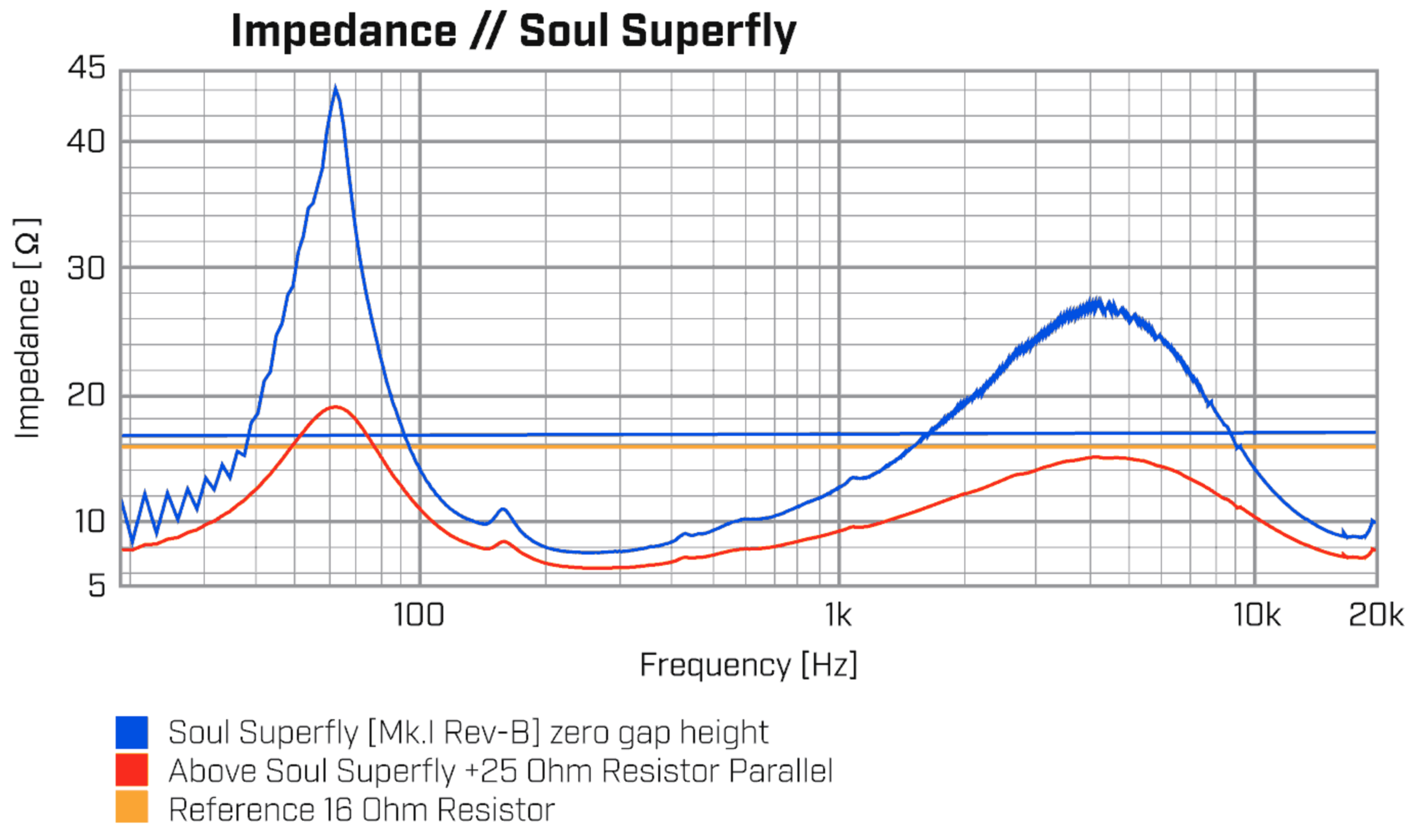Loading Resistors
Loading resistors allow users of higher impedance loudspeakers (32, 16, 12 and 8 ohm) flexibility in making happy (good sounding) amplifier/loudspeaker matchups.
Loudspeaker impedance: higher numbers represent an easier, “lighter” load for your amplifier. A loudspeaker’s impedance specification is generally an average, and the convention has been to round to highly composite numbers: 64, 32, 24, 16, 12, 8, 6, 4, 2.
What follows general relates to dynamic direct-radiator loudspeakers which require you to connect an amplifier to complete.
If your loudspeaker has a higher 12 or 16 ohm impedance specification, which puts much less demand/load on the amplifier compared to the now common 4 ohm loudspeaker, you can add loading resistors across the speaker’s binding post to adjust what the amp “sees”. Some amps like the easier “lighter” loads of a 16 or 12 ohm speaker. Others amp/speaker combinations might sound better when the amp is seeing an 8, 6 or even 4 ohm load. Loading resistors allow you to “trim” your load to best suite the amp and your desired sound. Loading resistors also help reduce the swings common in dynamic speaker systems.
The first generation of audio amplifiers were designed around 64 and 32 ohm loads. In the golden age of audio, roughly the ‘40s through the '60s, most amps were designed for a 24 to 8 ohm load sweet spot. Today, like most everything, there is a design for everyone; that said, the majority are designed for a load impedance sweet spot of 8 to 2 ohms.
What are the dangers of blowing up your amp using loading resistors with Zu speakers? Essentially nil, and nearly every audio amp made in the last five decades is workable with the 16 to 2 ohm load window, allowing those with higher impedance speakers to experiment in ways heavy load 4 ohm speakers do not.
So, specific to Zu speakers and models, you can reduce the impedance of Zu Druid, Soul Supreme, Soul Superfly, Omen and Omen DW to suite your amps target impedance butter-zone. Some amps are designed for and sound best with a light 16 ohm loudspeaker loud, others have a load sweet spot of 8 ohms, and still others 4 ohms. Also a factor on matchup is how an amp tolerates the reactive influences within the loudspeaker. A purely resistive loudspeaker would have a flatline impedance curve, and 8 ohm speaker would measure 8 ohms at every frequency point throughout its bandwidth.
If your amplifier sounds better with a heavier (stiffer), less reactive load, here’s an easy plug and play solution for such matchups.
Application details can be found on the loading resistor pages here:
While the focus has been on the more current hungry side of the loudspeaker load spectrum, 16 ohms and below, lets daydream on what might exist on the other side, where current is a minor driver of power transmission. Let’s say near to hand loudspeaker tech existed that was efficient, configurable for the desired wave propagation, full bandwidth and had very high input impedance, say 5040 ohms (a super composite number). What would the crazies such as myself do? For sure you would have to run two 300B vacuum tubes in series, no go-between transformer, directly feeding this “5040” loudspeaker. A fun dream for sure.. And if 5040 didn’t pan for the name alternates might be: Voltage Cult; Voltaire, Voice of God, Voltron, V, V>I…. [exiting stage before the heckling breaks out]

